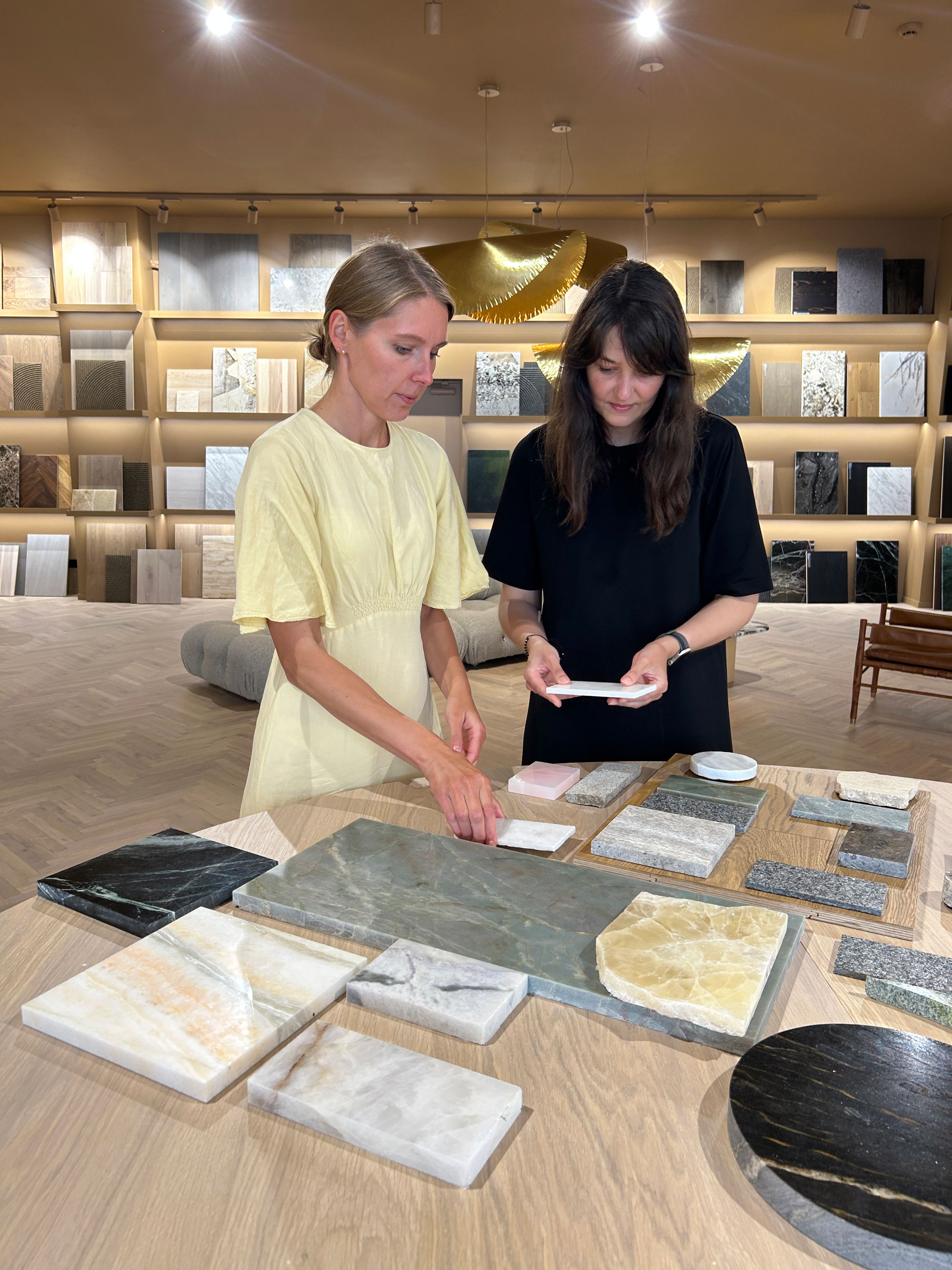
The message of the project
The natural stone industry, exemplified by Akmenstata, generates substantial waste, approximately 8m3 of leftover edges, offcuts, and small pieces monthly. Given the non-renewable nature of natural stone, it's imperative to adopt sustainable practices like repurposing waste to reduce environmental impact and disposal costs. While a portion is reused for road fill, the majority, deemed non-toxic, can be upcycled rather than downcycled. Agne Kucerenkaite and Akmenstata are collaborating to transform natural stone waste into a homeware and surface collection, advocating sustainability and resource efficiency. Their goal is to craft eco-conscious and health-friendly interior products, providing a sustainable solution for these residues.
The idea behind the project
The Stone Waste is Bliss project stems from a shared dedication to sustainability and efficient resource utilization. Through meticulous research, hands-on experimentation, and a comprehensive approach, the goal is to bridge the gap between discarded materials and functional, aesthetically pleasing pieces.
The use of natural stone in interior design has a rich history dating back to ancient civilizations such as the Egyptians, Greeks, and Romans. Today, it remains a popular choice, valued for its durability, timeless appeal, and unique character it imparts to spaces. Within the context of Stone Waste is Bliss, preserving historical significance in a modern framework is of paramount importance. The concept is built on the fusion of practical craftsmanship, a commitment to environmental responsibility, and a vision to advance the principles of circular design.
What next?
Through the Stone Waste is Bliss project, Agne Kucerenkaite and Akmenstata envision a future where sustainable design transcends being a mere trend, becoming a fundamental practice. Their goal is to set a new benchmark for repurposing industrial stone residue, pushing the boundaries of circular design. They aspire for their collection to be embraced not only for its aesthetic appeal but also for its environmental benefits.
Looking ahead, the project strives to serve as a model for other industries, advocating for healthier materials, waste reduction, and a more sustainable built environment.
- Project locations
- NetherlandsLithuania
- Projects Edition
- WORTH Partnership Projects II
- Project Call
- 2nd Call Projects
- Project Sector
- Furniture - Home Decoration
- Project Challenge
- High-added value solutions
Stakeholders
Coordinators
Agne Kucerenkaite, Studio Agne
- Address
- Netherlands
Doloresa Greivyte Butkiene, Akmenstata
- Address
- Lithuania
